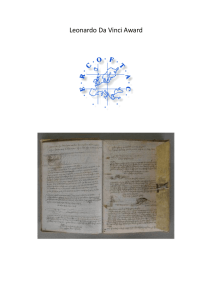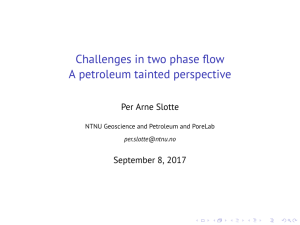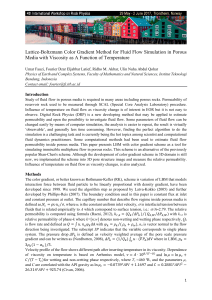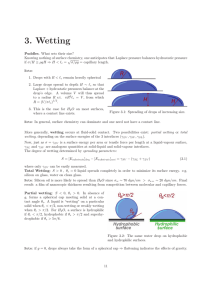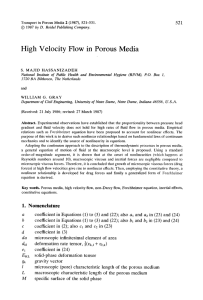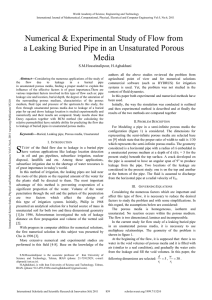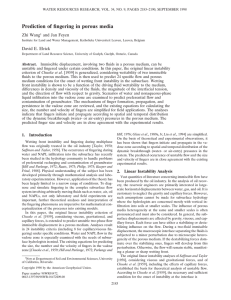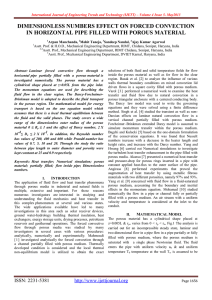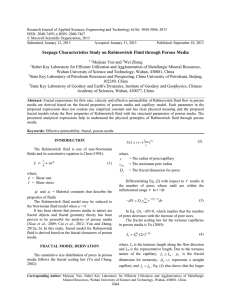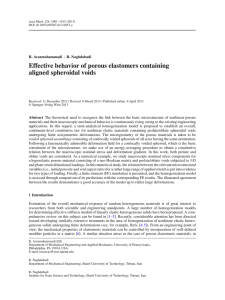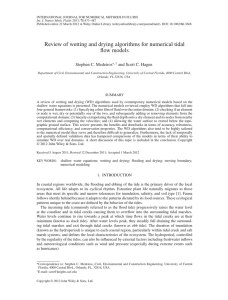MATHSYS PROJECT TITLE: Interfacial dynamics in porous media PROPONENTS: Matteo Icardi, James Sprittles, with potential industrial collaboration
advertisement
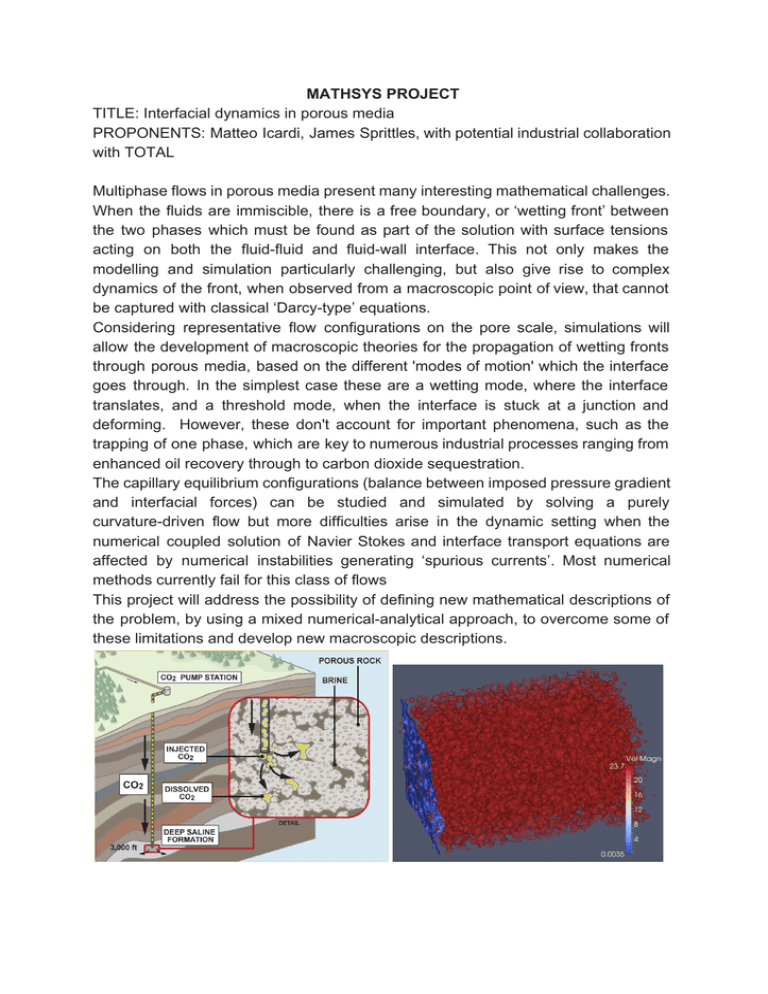
MATHSYS PROJECT TITLE: Interfacial dynamics in porous media PROPONENTS: Matteo Icardi, James Sprittles, with potential industrial collaboration with TOTAL Multiphase flows in porous media present many interesting mathematical challenges. When the fluids are immiscible, there is a free boundary, or ‘wetting front’ between the two phases which must be found as part of the solution with surface tensions acting on both the fluid­fluid and fluid­wall interface. This not only makes the modelling and simulation particularly challenging, but also give rise to complex dynamics of the front, when observed from a macroscopic point of view, that cannot be captured with classical ‘Darcy­type’ equations. Considering representative flow configurations on the pore scale, simulations will allow the development of macroscopic theories for the propagation of wetting fronts through porous media, based on the different 'modes of motion' which the interface goes through. In the simplest case these are a wetting mode, where the interface translates, and a threshold mode, when the interface is stuck at a junction and deforming. However, these don't account for important phenomena, such as the trapping of one phase, which are key to numerous industrial processes ranging from enhanced oil recovery through to carbon dioxide sequestration. The capillary equilibrium configurations (balance between imposed pressure gradient and interfacial forces) can be studied and simulated by solving a purely curvature­driven flow but more difficulties arise in the dynamic setting when the numerical coupled solution of Navier Stokes and interface transport equations are affected by numerical instabilities generating ‘spurious currents’. Most numerical methods currently fail for this class of flows This project will address the possibility of defining new mathematical descriptions of the problem, by using a mixed numerical­analytical approach, to overcome some of these limitations and develop new macroscopic descriptions.
